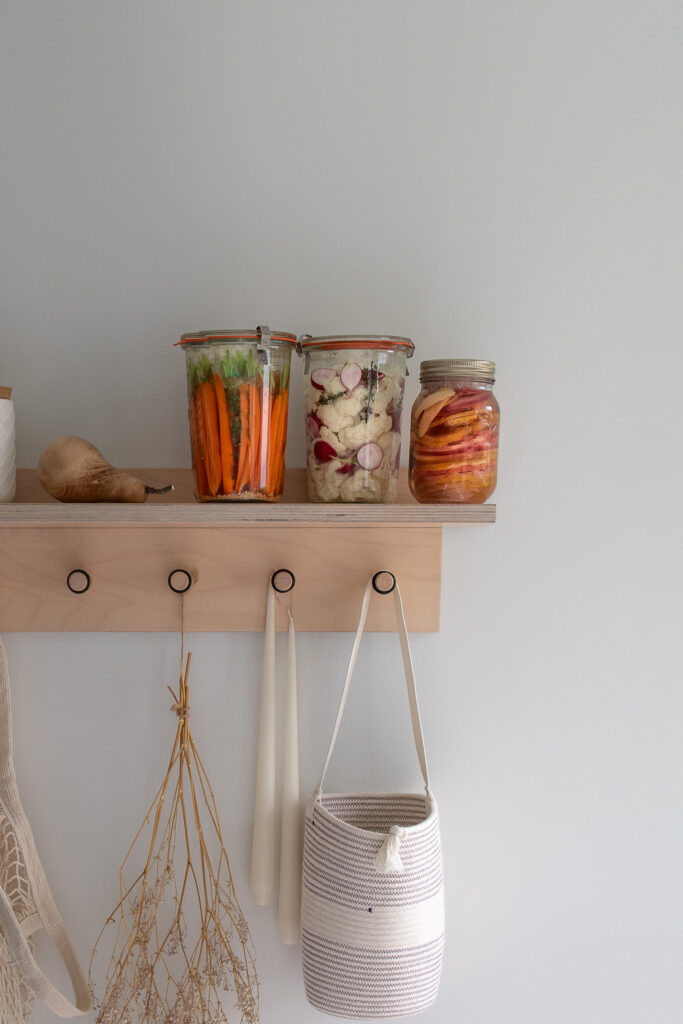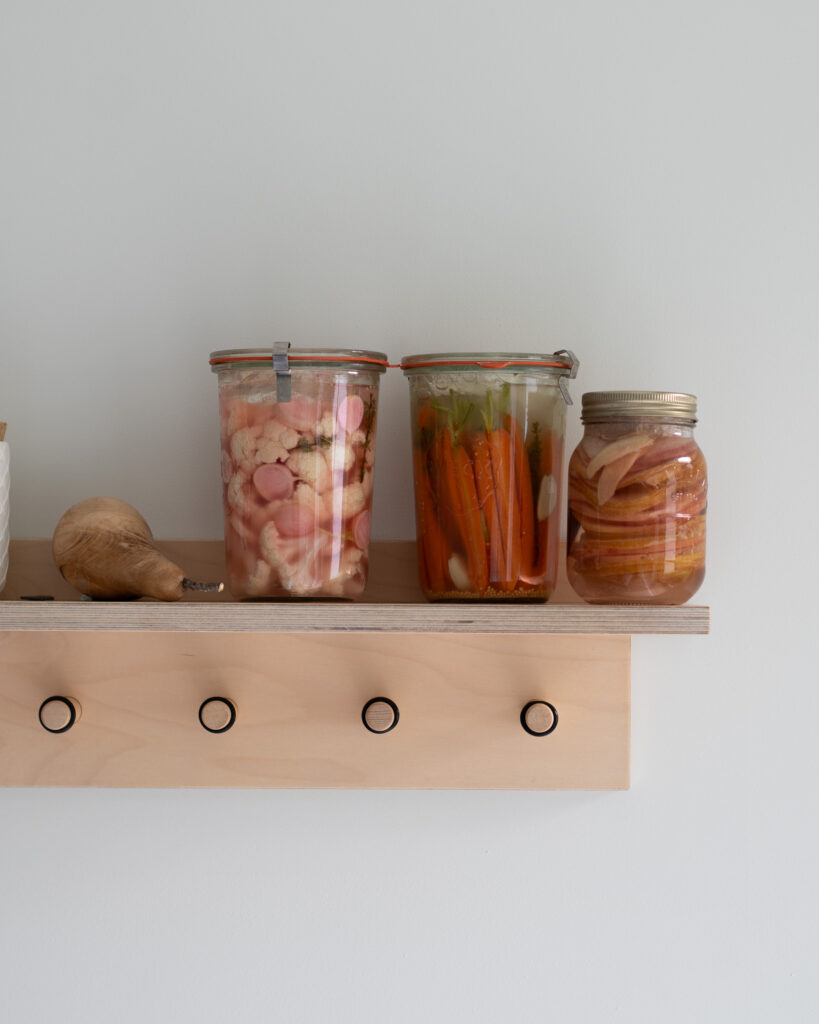
Fermented foods are the unsung heroes of the gut, giving our intestines a standing ovation-worthy performance. You see, these foods are packed with probiotics – those friendly microorganisms that turn your digestive system into a well-oiled machine. Probiotics are like the peacekeepers in your gut, ensuring that everything runs smoothly and that harmful invaders ( bad bacteria) are kept in check. In this blog post, I will explain how to Ferment Vegetables, offering a step-by-step guide for beginners.
Lacto-fermentation is an age-old food preservation technique that not only extends the shelf life of vegetables but also enhances their flavour and nutritional value. Unlike canning or pickling, which rely on heat and vinegar, lacto-fermentation uses naturally occurring beneficial bacteria to create a tangy, probiotic-rich product.
What is Lacto-Fermentation?
Lacto-fermentation is a simple and ancient method of preserving vegetables through fermentation. The name comes from Lactobacillus, a group of beneficial bacteria that convert sugars into lactic acid. This process not only preserves the vegetables but also adds a unique tangy flavour and introduces beneficial probiotics to your diet.
Here’s a step-by-step guide on how to lacto-ferment vegetables at home:
Ingredients and Equipment
Before you start fermenting, gather the necessary ingredients and equipment:
Fresh Vegetables: You can ferment a wide variety of vegetables, such as cabbage, green tomatoes, cauliflower, carrots, radish, peppers, and more. Pears and apples work well too.
Salt: Use high-quality, non-iodised salt like fine sea salt. The salt helps control the fermentation process and inhibits the growth of harmful bacteria.
Filtered Water: Chlorinated tap water can interfere with the fermentation process, so use filtered or cooled water from the kettle.
Spices and Herbs: optional: add spices and herbs for flavour. Common choices include garlic, ginger, dill, or chili flakes. Be sparing though, the flavour intensifies.
A Glass kilner Jar: Use a clean, glass jar with a hinged lid. The size of the jar should depend on the amount of vegetables you wish to ferment.
Add the Brine:
This is a very simple method for preparing the brine; place the vegetables in an appropriate sized jar. Pour the water into the jar, almost to the top. Now place a bowl on the scales and weigh the water from the jar in grams. Once you have a figure you can calculate the salt. You will need 2% of the total weight of the water. For example:
360g water x 2% Salt = 7.2g Salt (use 7g)
Stir the water with a wooden spoon to dissolve the salt, then pour the brine on the vegetables in the jar. Leave about 2.5cm of space at the top of the jar to allow for expansion during fermentation.
Weight and Seal:
Place a glass weight (or a food-safe plastic bag filled with water No metal) on top of the vegetables to keep them submerged. This is important to prevent unwanted bacteria ie. mould. Remove the rubber gasket, seal the jar with the lid.

Fermentation Time
Store the jars at room temperature, away from direct sunlight. The lacto-fermentation process will take a minimum of 4 days and up to several weeks, depending on factors like temperature and the type of vegetable.
This is DAY 4 of fermentation. The brine has become cloudy and there are signs of CO2. From this day forward check the vegetables daily for the desired level of tanginess. Move to the fridge to slow down the fermentation process when you’re happy with the taste. . I like my vegetables to ferment for 7-10 days. Consume within approximately 1 month.
When you have the desired flavour for your fermented vegetables they can be used as a tasty condiment, side dish, or snack. Incorporate them into salads, sandwiches, or simply enjoy them on their own.
Health Benefits of Lacto-Fermented Vegetables
Lacto-fermented vegetables offer numerous health benefits:
Probiotics: The fermentation process introduces beneficial bacteria into the vegetables, which can promote gut health and boost your immune system.
Nutrient Retention: Lacto-fermentation preserves the nutritional value of vegetables, including vitamins and minerals.
Improved Digestion: The enzymes produced during fermentation can aid in the digestion of other foods.
In conclusion, lacto-fermentation is a fantastic way to preserve the harvest and unlock a world of flavour and nutrition. Whether you’re new to food preservation or a seasoned enthusiast, have a go at fermenting vegetables and savour the delicious, probiotic-rich results of this ancient technique. It’s a simple and rewarding process that brings you closer to your food and its preservation. Happy fermenting!
Did you make this?
I would love to know if you tried this method of fermentation. Please let me know by commenting below. Or you could snap a photo and share and tag it on Instagram @nordickitchenstories.





when fermenting do you want a tight seal or room for airflow. your instructions said to remove the rubber ring….
Hi Therese, by adding a weight or a bag filled with with water will prevent any unwanted bad bacteria and airflow. Removing the rubber seal will allow any gasses that build to dissipate. You can leave it on the jar but you’ll have to remember to open the jar every now and again to release the gas build up. This is called ‘burping’. Hope this helps.